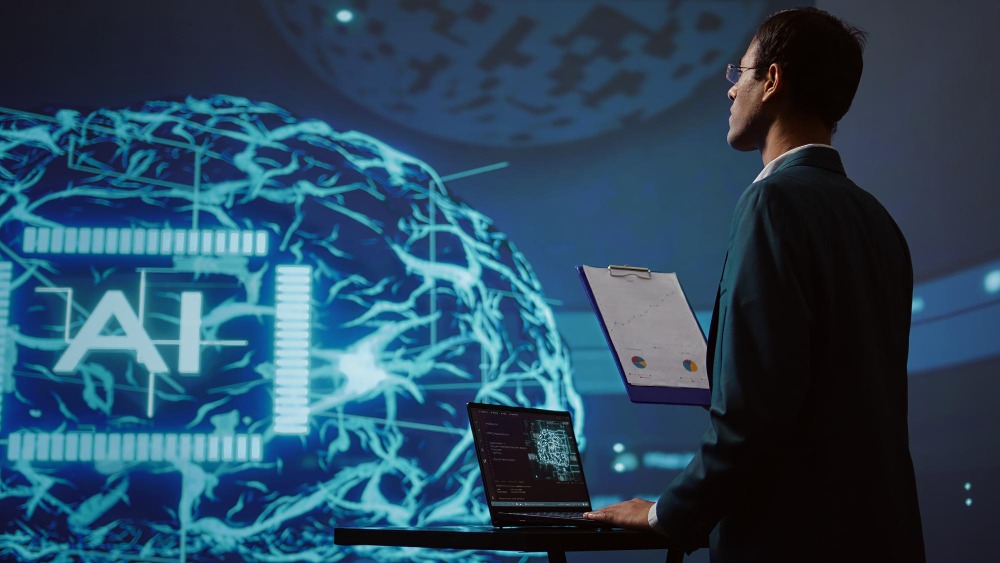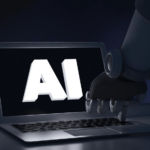Artificial Intelligence (AI) and Machine Learning (ML) are two terms that are often used interchangeably in the world of technology, but they are not the same. While they are related, understanding the differences between AI and Machine Learning is critical for businesses, developers, and marketers looking to leverage these technologies effectively.
In this blog, we will dive into the key distinctions between Machine Learning and AI, explore their real-world applications, and understand how these technologies work together to shape our future. By the end of this article, you will have a clear understanding of both concepts and how they impact various industries.
What is Artificial Intelligence?
Artificial Intelligence (AI) refers to the ability of a machine or a computer system to perform tasks that would normally require human intelligence. These tasks include reasoning, decision-making, problem-solving, language understanding, and even creativity. AI aims to create systems that can simulate human cognition and behavior.
AI can be categorized into two types:
- Narrow AI (Weak AI): This is designed to perform specific tasks such as facial recognition, internet search, or self-driving car systems. It is task-specific and doesn’t possess general intelligence.
- General AI (Strong AI): A more advanced concept, general AI refers to systems that possess the ability to understand, learn, and apply intelligence across a wide range of tasks, much like a human brain. General AI remains a theoretical concept and has not yet been realized.
What is Machine Learning?
Machine Learning (ML) is a subset of AI that focuses specifically on enabling machines to learn from data and improve their performance over time without being explicitly programmed. In simple terms, ML allows computers to recognize patterns in data, make predictions, and improve their responses based on past experiences.
Machine learning relies on algorithms that can analyze data, learn from it, and then make decisions or predictions. Unlike traditional software, which follows pre-programmed instructions, machine learning systems adapt and evolve as they process more data.
Key Differences Between AI and Machine Learning
While AI and Machine Learning are closely related, they serve different purposes. Here are the main distinctions between them:
- Scope: AI is the broader concept, encompassing the idea of machines being able to perform tasks requiring human intelligence. ML, on the other hand, is a narrower field that focuses on the ability of machines to learn from data.
- Dependence on Data: Machine Learning relies heavily on large datasets to function. AI, in its broadest sense, doesn’t necessarily require data but can include rule-based systems or expert systems that simulate intelligent behavior.
- Functionality: AI aims to mimic human-like intelligence and behaviors, while Machine Learning specifically focuses on enabling systems to learn from data and make predictions or decisions.
- Autonomy: AI may involve rule-based systems where the machine follows set rules and logic. ML systems, however, can adapt and change their behavior based on new data.
In short, Machine Learning is a subset of AI, but not all AI is Machine Learning.
Types of Machine Learning
Machine Learning can be divided into three main types, each with its unique approach to learning from data:
Supervised Learning
In supervised learning, a machine is trained on a labeled dataset, which means that the data includes both input features and corresponding output labels. The algorithm learns to map inputs to outputs and makes predictions based on this training. Supervised learning is used in applications like image classification, fraud detection, and medical diagnosis.
Example: A spam email filter is trained using a dataset of emails labeled as “spam” or “not spam.” The model learns to identify the patterns that distinguish spam from non-spam emails.
Unsupervised Learning
Unsupervised learning involves training a machine on an unlabeled dataset. The algorithm tries to identify hidden patterns and structures in the data on its own. This approach is used for clustering, association, and anomaly detection.
Example: In customer segmentation, unsupervised learning can identify groups of customers with similar purchasing behaviors without needing predefined categories.
Reinforcement Learning
Reinforcement learning is based on the concept of learning through trial and error. The machine interacts with an environment and receives feedback in the form of rewards or penalties based on its actions. Over time, the system learns the optimal actions to maximize its rewards.
Example: Reinforcement learning is commonly used in robotics and gaming, where a robot learns to perform tasks like moving objects or playing chess by interacting with the environment.
How AI and Machine Learning Work Together
AI and Machine Learning work hand-in-hand to create intelligent systems. While AI encompasses the broader concept of simulating human intelligence, Machine Learning provides the tools and algorithms necessary to enable machines to learn from data. Together, they create powerful systems that can make data-driven decisions and evolve over time.
Example: AI applications like self-driving cars rely heavily on Machine Learning algorithms. These cars use ML to process data from sensors, make decisions based on patterns, and improve their driving capabilities over time.
Real-World Applications of AI and Machine Learning
Both AI and Machine Learning have found applications in a wide range of industries, bringing new levels of automation, efficiency, and innovation. Here are some notable examples:
AI in Healthcare
AI is being used to analyze medical images, assist in diagnosis, and personalize treatment plans. Machine learning algorithms can also predict patient outcomes and help in drug discovery.
Example: IBM Watson Health uses AI to analyze medical data and provide doctors with evidence-based treatment recommendations.
AI in Finance
AI and ML are transforming the financial industry, from fraud detection to algorithmic trading and customer service. These technologies enable faster, more accurate decision-making and improve the overall customer experience.
Example: Banks use AI-powered chatbots to assist customers 24/7 with inquiries, transactions, and account management.
Machine Learning in Marketing
ML algorithms are widely used in marketing for customer segmentation, personalized recommendations, predictive analytics, and content optimization.
Example: E-commerce websites like Amazon use Machine Learning to recommend products based on previous purchases and browsing history.
Machine Learning in E-Commerce
Machine Learning enhances the e-commerce experience by providing personalized shopping experiences, inventory management, and dynamic pricing strategies.
Example: ML helps businesses predict demand and adjust pricing strategies to stay competitive in real-time.
AI in Autonomous Vehicles
Self-driving cars utilize AI and Machine Learning to navigate roads, detect obstacles, and make real-time decisions. The integration of AI allows vehicles to “think” and react like a human driver.
Example: Tesla’s autopilot system uses a combination of AI and ML to navigate, control speed, and make driving decisions.
Challenges of AI and Machine Learning
While AI and ML offer incredible benefits, there are also challenges associated with their implementation:
- Data Privacy and Security: AI and ML systems require vast amounts of data, and handling sensitive data requires robust security measures to prevent breaches.
- Bias in Algorithms: Machine learning models can inherit biases from the data they are trained on, leading to biased decisions.
- Resource Intensive: Training AI and ML models requires significant computational power, which can be expensive and time-consuming.
- Lack of Transparency: Some AI models, especially deep learning models, operate as “black boxes,” making it difficult to understand how decisions are made.
The Future of AI and Machine Learning
The future of AI and Machine Learning is incredibly promising. As technology continues to evolve, AI will play an even more significant role in automation, healthcare, education, and every other industry. In particular, the integration of AI with emerging technologies such as the Internet of Things (IoT), blockchain, and 5G networks will unlock new possibilities for businesses and consumers alike.
Key trends to watch:
- Ethical AI: As AI becomes more prevalent, there will be an increased focus on creating ethical guidelines for its use.
- AI Democratization: With the rise of user-friendly AI tools, more businesses will have access to AI-driven solutions, even without specialized knowledge.
- AI and Human Collaboration: AI will continue to complement human capabilities, assisting workers in decision-making, creativity, and problem-solving.
Conclusion
Understanding the differences between Machine Learning and AI is essential for anyone looking to harness the power of these technologies. While AI encompasses a broader range of capabilities aimed at mimicking human intelligence, Machine Learning focuses specifically on enabling systems to learn from data.
As AI and ML continue to evolve, they will transform industries, enhance customer experiences, and drive innovation. By embracing these technologies, businesses can stay competitive and unlock new opportunities in the digital landscape.


